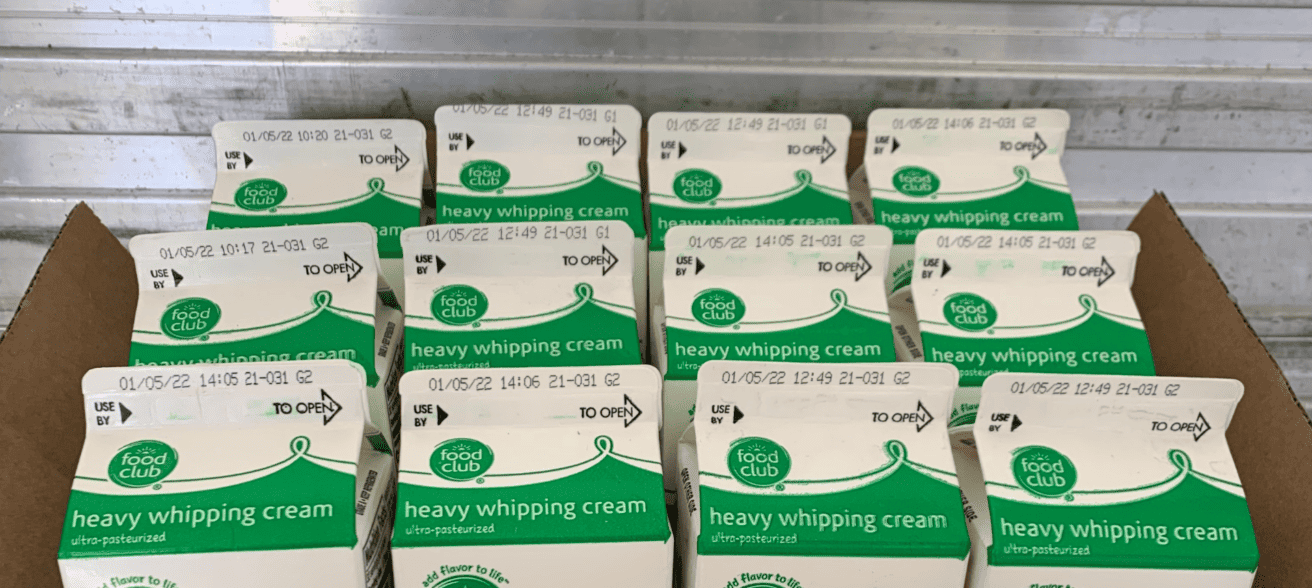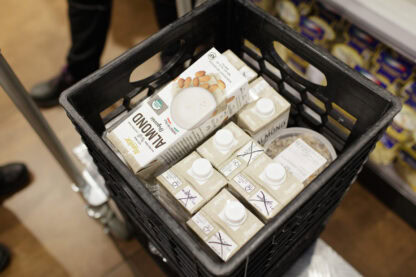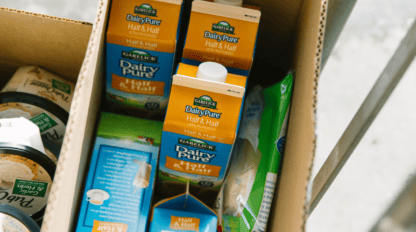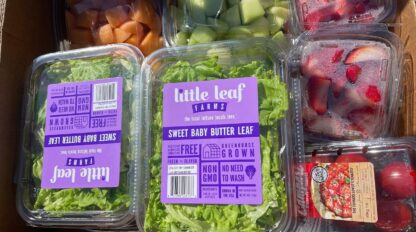What you need to know about “expiration dates”

Recently, a member of our team – who shall remain nameless to protect the guilty – confessed something many of us could relate to: “Before I worked around food (and food people!) I went for the milk at the far back of the grocery store fridge. ‘You could feel good about Hood,’ I thought, but you could feel better if it’s the very newest gallon! So, arm-deep, I bypassed the jugs dated two weeks from now in favor of ones dated three. Leave the ‘old’ product for a less savvy consumer. Or so I thought – because I was the less savvy consumer.”
Live and learn: We now know that date labels like “best by,” “sell by,” and “use by” are a source of incredible confusion for shoppers and eaters everywhere, leading to millions of pounds of food being thrown away each year. Often, that food is still perfectly edible. This food waste has an impact on people, the planet, and our pocketbooks.
So what do date labels actually mean? How do we use them? What purpose do they serve? How did we get here? Let’s dive in!
First things first: Food date labels are not “expiration dates” – with one exception.
The exception is infant formula.
Otherwise, says the Food Safety and Inspection Service of the U.S. Department of Agriculture, those dates on the side of food packaging are a manufacturer’s recommendation for when that food is likely to be of the very best quality. They have nothing to do with food safety – and they aren’t federally regulated.
Use date labels like a benchmark, in other words, but not the final arbiter of what’s good. Here’s the guidance we give our nonprofit partners about the ranges within which food is usually just fine even though it’s past-dated.
How can I tell if food is still good to eat?
Look at it. Hold it in your hands. Take a sniff or maybe even a little taste. This is how our grandparents and great-grandparents managed in the days before date labels.
If food hasn’t been stored properly, if it’s leaky or moldy, if it smells other than the way you think it should, don’t pass go! Otherwise, eat up! And if you need creative ideas for using up leftovers or items that may be slightly bruised/wilted/soggy/imperfect-but-still-good, check out Food Waste Feast’s Hero Recipes.

How date labels started
Date labels in the United States are a product of relatively recent history involving, albeit peripherally, Al Capone.
That Al Capone. Back in the 1930s (possibly/maybe motivated by a family member’s foodborne illness), Capone lobbied local government in Chicago to pass a law requiring date labels on milk.
But it wasn’t until much later, well into the 1970s (during some of our lifetimes), that date labels started appearing on other products driven by consumer demand for fresh food. The trouble was – and is! – that: 1) absent federal standards, there’s no shared understanding for how date labels are applied and interpreted (different states have different requirements for what foods require a label and even for how long a product can be sold past that date) and 2) absent shared understanding for what those dates mean, there’s a widespread misperception that past-dated products equal bad ones.
Curious about how date labels are applied here in Massachusetts? Check this out.
[Insert call out box. “Spoonfuls keeps good food out of landfills every week. Learn more about our food recovery work.” Button to ‘Our Work.’]
Laws that could change Food Date Labeling
Thankfully, it isn’t just those of us in food recovery who are talking about the trouble with date labels and their impact on wasted food. There are solutions floating around the federal and state governments, with food date labeling standardization being among the most popular. The idea is that by establishing clear, uniform language for date labels, we can minimize confusion among consumers and prevent more wasted food (no matter where or in what state you’re shopping). A federal standard is the preferred solution for this reason.
Here are three bills addressing food date labels to watch:
- Food Date Labeling Act: If passed, this bill would set a national food date labeling standard. It was reintroduced in 2025 with mounting bipartisan support, including a Republican co-sponsor, which is a good sign.
- NO TIME TO Waste Act: This federal bill focuses on building consumer awareness around the issue of food waste and ways to reduce food waste at home, including through food date labeling education.
- An Act Decreasing Food Waste by Standardizing the Date Labeling of Food: This Massachusetts bill is currently in committee and proposes the standardization of food date labels in our state. As referenced above, while we’re in support of this bill, we know that the best solution to tackling date label confusion is a federal standard.
Here’s what else you can do if you care about wasted food.
Apart from being a savvy consumer (one who doesn’t automatically opt for the milk at the back of the grocery store fridge), here’s what else you can do.
- Study food storage best practices. Optimal food storage can have an impact on the longevity of food in your kitchen. In fact, sometimes dates for labels are selected assuming consumers aren’t practicing optimal food storage. Learning tricks like keeping onions and potatoes separated and placing meat on the bottom shelf of your fridge can help you extend the life of your food, even beyond its date label.
- Speak up in support of policies and legislation that matter – and hold your elected officials accountable (read: vote)! Sign up and stay tuned for our Advocacy Alerts for specific opportunities to lend your voice or your “voice” (because letters and e-mails are good, too!) to evolving legislation.
- Support Spoonfuls. With the support of donors like you, we keep 100,000+ pounds of good food out of the waste stream every week. Your contributions ensure we can maintain and grow this important work.
Share what you know! From stories on social media (like this one) to talking with friends and family about how you come to your purchasing decisions, you have the power to influence others. Case in point: Said one member of the Spoonfuls team, “I swear by actively involving my child in grocery shopping. Maybe one day I’ll be the voice in their head when they’re doing their own shopping, and they’ll give the day-old bread a chance!”


